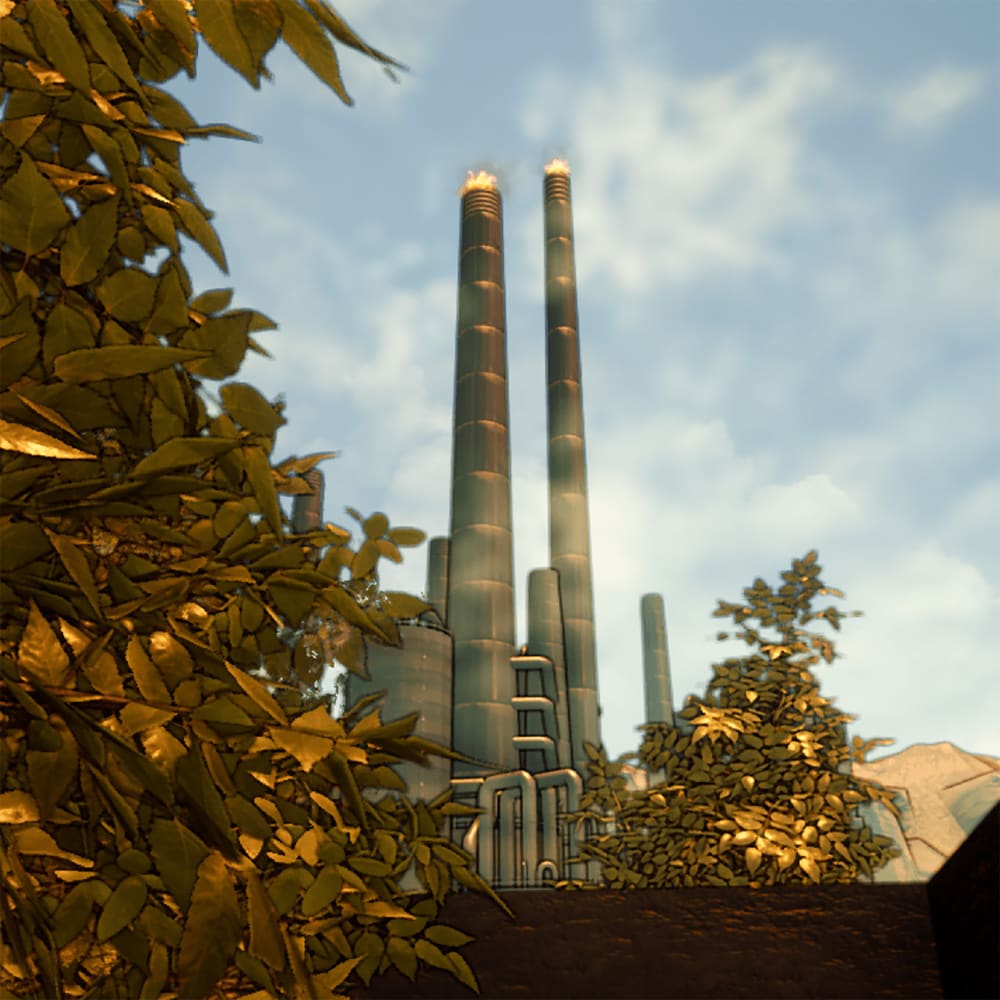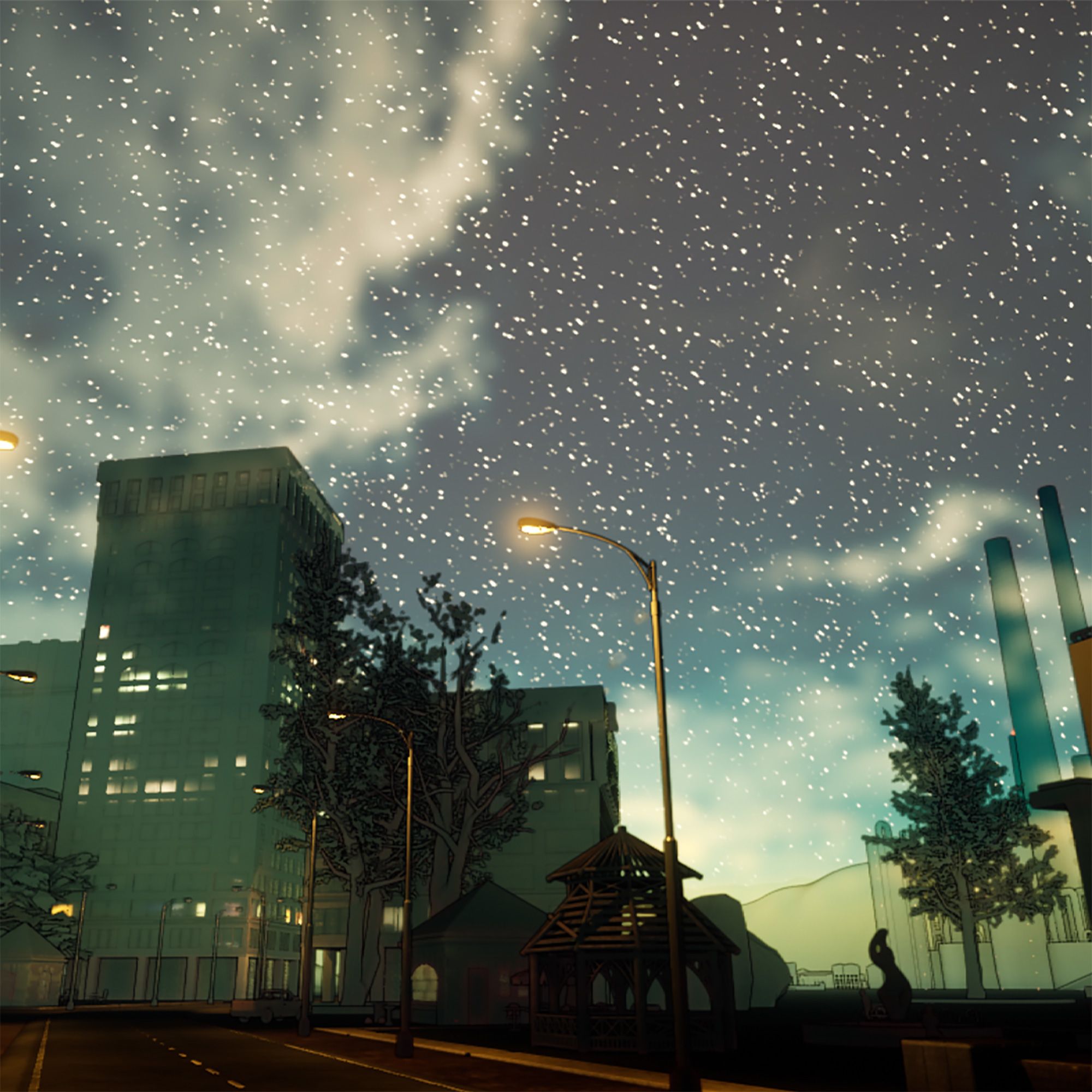
BA (Hons) Interior and Spatial Design, Camberwell College of Arts, UAL | Photograph: Emilion Sannie


BA Interior and Spatial Design 2021 graduate Emilion Sannie introduces us to his Graduate Showcase submission ‘Ultown, Greetings from Rochester City’.
Emilion is deeply interested in new technologies and has a passion for greener cities. He has brought together these 2 themes by creating a game about a dystopic city affected severely by air pollution. Designed as a learning hub, the aim of the game is to teach its players the effects of air pollution through real life-inspired events and character dialogue with people who live in the city.
We interviewed Emilion who told us more.

In this project, I wanted to create a prosperous city that had turned dystopic as mass consumption and production slowly degraded its air quality. I was inspired by American metropolises like Phoenix and Las Vegas that are facing global issues such as air pollution and smog, leading to heatwaves, higher rates of lung cancers and cardiovascular diseases.
I wanted to design a space that embodied and symbolised the need for urgent action, but also tells a story. The story of a world that, due to conflicts of interests, over-productivity, was creating strong issues and solving few problems. In Ultown the game takes places in different locations in the world, and this helps show the fact that the problem is universal, and affects numerous metropolises throughout the world, creating a long-term global problem.

My aim for this game was for it to be a learning hub, where the player could understand, through dialogues with the characters, some consequences of air pollution. I also wanted it to symbolise elements inspired by real phenomenons such as the yellow smog, which is a mix of pollutants and sand that the inhabitants of the city of Beijing, China, faced in March 2021.
This city embodies our last chance to fight air pollution. Its name is a contraction of the prefix ‘ult’ and the word ‘town’. ‘Ult’ can be found in 'ultimate' (the last) but also refers to the idea of ‘beyond’ in its Latin understanding, expressing the virtual nature of this work that goes beyond reality in its mutual understanding.
Virtual tour of the city, 2021
There was a strong work process behind the narratives and ambiance which I thought would be the principal factor for conveying my work.
My work process aimed at 2 goals:
1. Creating mechanics that would help raise awareness on air pollution issues, creating a feeling of emergency through the development of the smog along with the day/night cycle which the game takes you through.
2. Create a ‘mediatic’ experience, that conveys a message through the depiction of a dystopic city and the public health issues with its lack of concern for long-term air pollution problems, affecting the quality of life and economy.
My main tool for this work was the computer and the incredible range of subsets of tools it offers. On the same machine, I was able to compose the musical ambiance, design buildings for ‘Ultown’, design the city, program the game and its mechanics, plus make videos and cinematics.

I have been inspired by many creative universes, from movies such as Mad Max and games such as XIII and Fallout 4 whereby post-apocalyptic genre and dystopias had a visible print in the work. Beyond all fictions, I was inspired by actual places such as Death Valley and the Sonoran Desert in North America.
Also, real metropolises - for example, Las Vegas and Phoenix inspired the geographical, narrative, historical, economic context and the roadmap of the city.

I intend to design games and virtual spaces that can convey strong experiences, whether human or artistic and create narratives that makes us reflect on our existence, perceptions and senses.
Next year, I will go and study game design in Montpellier, France. I aim to use all knowledge and skills I have developed in the last 3 years of studying BA Interior and Spatial Design to continue this thinking on space and virtuality and implement it into games.
Telephone
+44 (0)20 7514 6302